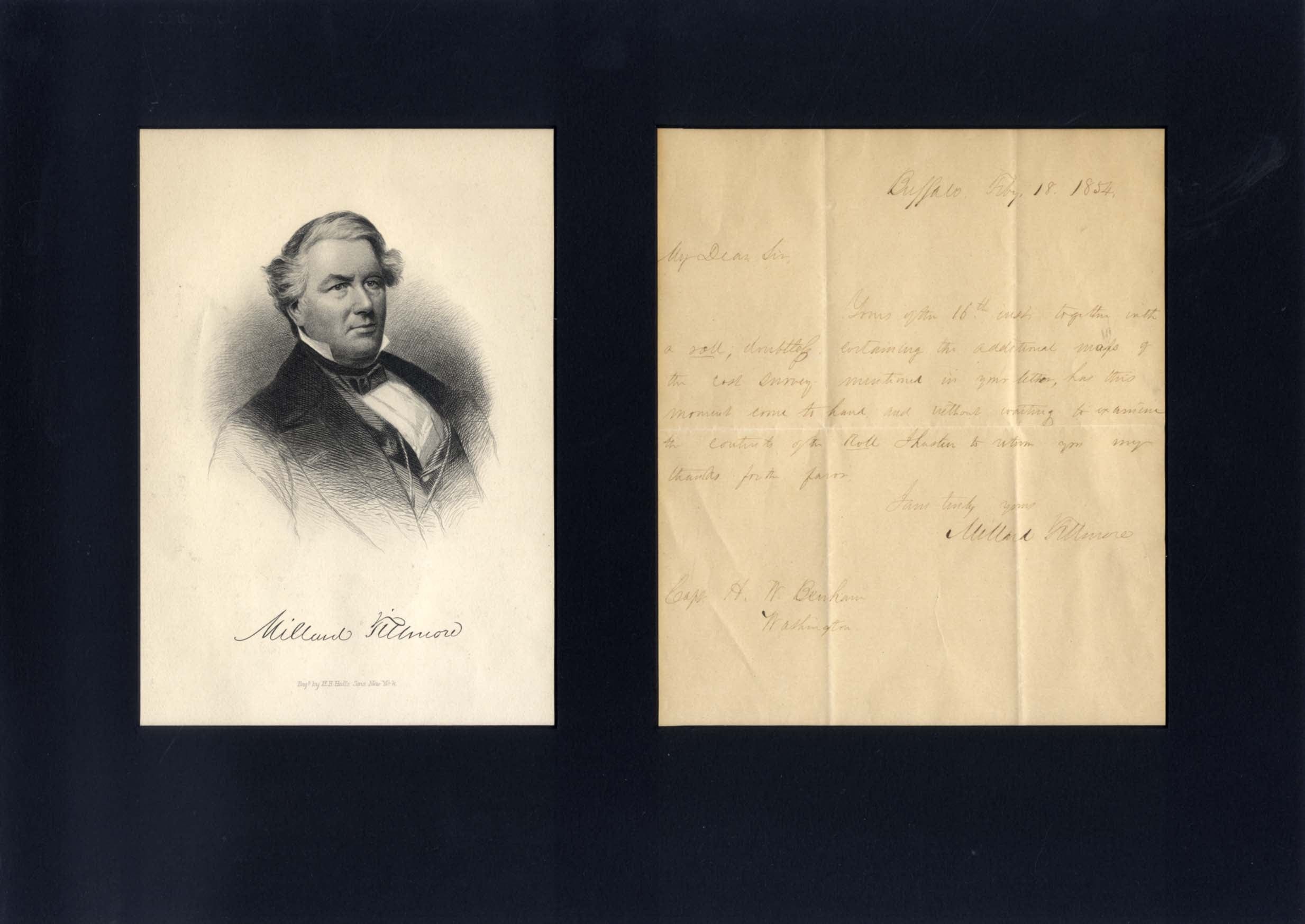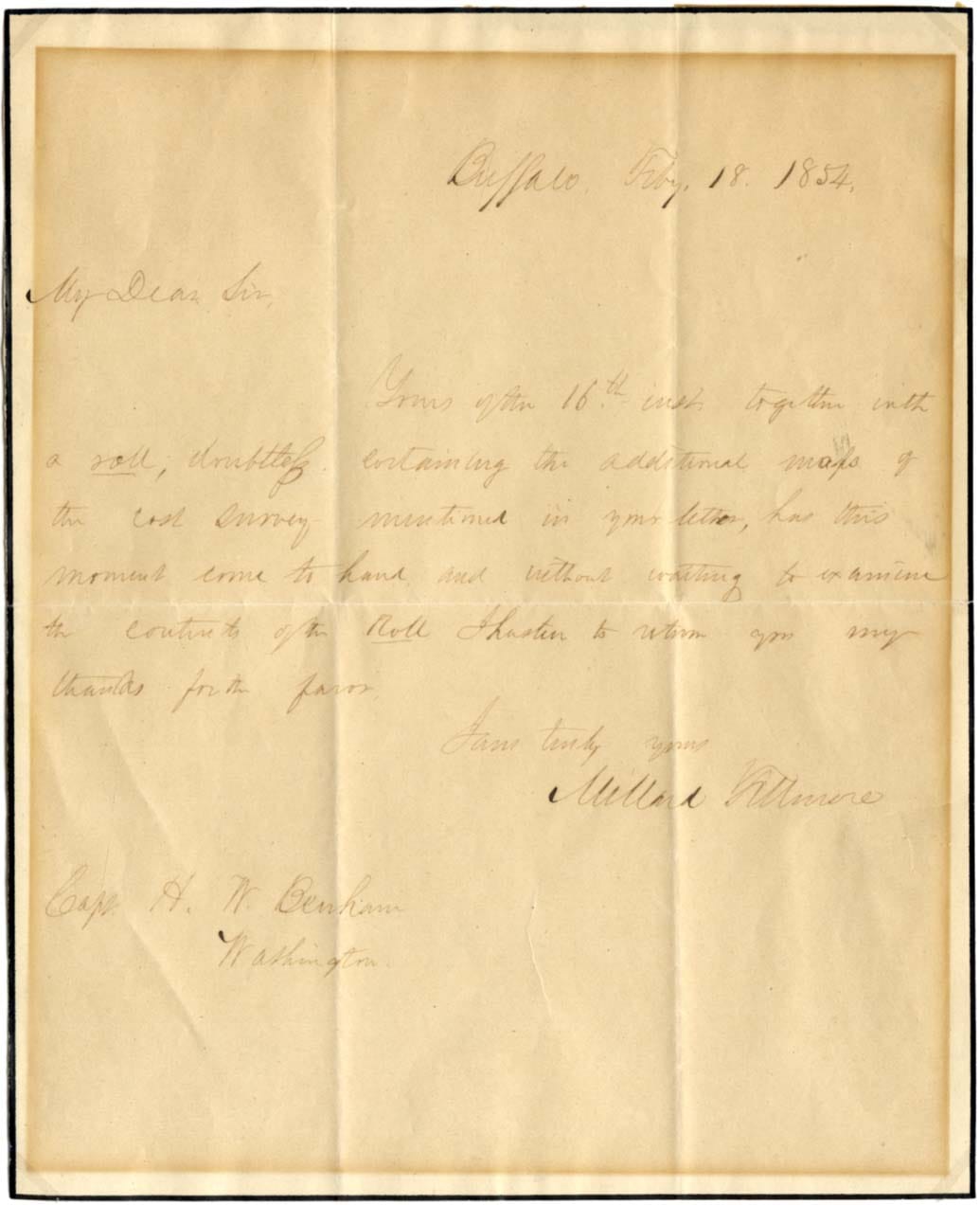Descripción
Autograph letter signed, one page, 6,75 x 8,5 inch, Buffalo, 18.02.1854, reply letter to Captain H. W. Benham* - concerning maps of a survey, written and signed in dark ink "Millard Fillmore", attractively mounted (removable) for fine display with a portrait picture of Fillmore (altogether 16,5 x 11,75 inch), with intersecting letter folds, slightly faded, and mat burns from previous framing - in fine condition.
"My Dear Sir,
Yours of the 14th inst. Together with a roll, doubtless containing the additional maps of the last survey mentioned in your letter, has this moment come to hand and without waiting to examine the contents of the roll I hasten to return you my thanks for the favor."
* Henry W. Benham was an American military engineer. He was at this time, superintending engineer for seacoast defense projects, including a seawall at Boston Harbor and a lighthouse at Buffalo, New York, which would no doubt pique Fillmore`s interest. He served with distinction during the Civil War inventing a method of pontoon bridges which expedited troop movement.
Más información sobre la persona
Profession:
(1800-1874) 13th president of the United States, serving from 1850 to 1853, the last to be a member of the Whig Party while in the White House.
Year of Birth: 1800
Certificado de autenticidad
Todas nuestras piezas se venden con un certificado de autenticidad. Si una pieza resulta estar equivocada o si no le gusta un autógrafo, recuperará su dinero durante toda la vida.
Pago y seguridad
Su información de pago se procesa de forma segura. No almacenamos los detalles de la tarjeta de crédito ni tenemos acceso a la información de su tarjeta de crédito.


